Advice
Car winter kit: Top winter driving essentials for 2025
Use our driving in snow and winter checklist to ensure you’ve got all the winter essentials kit in place for driving safely in snow and icy roads.
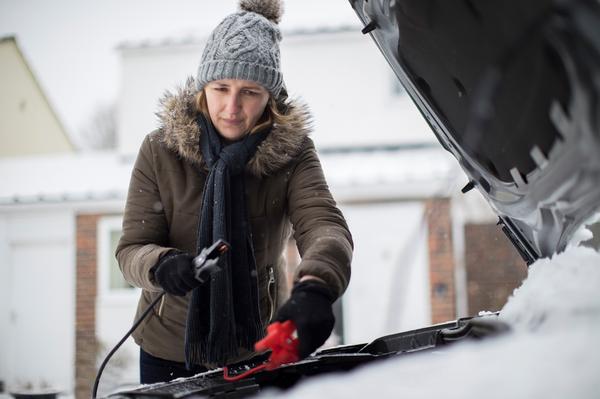

Words by: Nimisha Jain

Additional words by: Andrew Woodhouse
Published on 25 November 2025 | 0 min read
We may not get Arctic conditions here in the UK, but it still gets cold and icy – so it’s important to prepare properly for driving in the snow before you set off.
You should check the weather forecast and avoid non-essential journeys when extreme ice or snow is forecasted. If you have to travel, you should give yourself time to de-ice and clean your car before you set off. Here’s our winter essential checklist of thing to do to prepare your car for icy roads and winter and have a much safer and less stressful winter season:
You should check the weather forecast and avoid non-essential journeys when extreme ice or snow is forecasted. If you have to travel, you should give yourself time to de-ice and clean your car before you set off. Here’s our winter essential checklist of thing to do to prepare your car for icy roads and winter and have a much safer and less stressful winter season:
✅ Check your liquid levels: screenwash, anti-freeze, coolant, oil, fuel
✅ Check your car battery ✅ Clean your windows inside and out ✅ Clean your lights ✅ Check your tyres ✅ Consider fitting winter tyres ✅ Check your wiper blades ✅ Clear leaves from under your bonnet ✅ Carry your phone charger with you ✅ Consider buying a car cover ✅ Make a winter car survival kit
✅ Check your car battery ✅ Clean your windows inside and out ✅ Clean your lights ✅ Check your tyres ✅ Consider fitting winter tyres ✅ Check your wiper blades ✅ Clear leaves from under your bonnet ✅ Carry your phone charger with you ✅ Consider buying a car cover ✅ Make a winter car survival kit
Following these simple steps at home will help keep your car ready for driving in snow. In the next section, we’ve detailed how to carry out these checks.
However, if you don’t want to do all this yourself, many car garages and dealers offer a professional winter car check. Some places even do it for free. If your car is due for a service, it would be worth getting this done before winter sets in and the roads become snow-covered. Some garages offer winter specific services.
However, if you don’t want to do all this yourself, many car garages and dealers offer a professional winter car check. Some places even do it for free. If your car is due for a service, it would be worth getting this done before winter sets in and the roads become snow-covered. Some garages offer winter specific services.
Check your liquid levels
Screenwash
Using a screenwash in winter is important to remove any extra dirt and grime around the windscreen and wiper blades, so make sure you have enough of it. The screenwash also contains anti-freeze which helps in preventing water from freezing, thus it’s important to use proper screenwash rather than just using water. The screen washer bottles are usually located under the bonnet in the engine compartment of your car – refer to your car’s handbook to know the exact location. Remember, you shouldn’t put anti-freeze in the washer bottle as it can damage the paintwork.
Engine Coolant
The engine’s coolant, also known as anti-freeze, helps in preventing it from overheating or freezing during winters. You’ll need a 50-50 mix of antifreeze and water, which is added to the water in the engine's cooling system. Check that your coolant level is between the min and max mark. It shouldn’t need topping up but do double-check. If it does, you’ll need to get your car to a garage. Remember: don’t open the filler cap unless the engine is cold.Engine Oil
Cars running on low oil in winters often break down. Low oil can also cause damage to the engine which can be costly to fix. Check that your car’s oil level is between the minimum and maximum mark and top it up if needed. To reduce the risk of engine damage, consider changing your oil. Dirty oil can become more viscous in cold weather (especially diesel), and it may struggle to flow through the engine properly.Fuel
There are two people in this world: those that top up their fuel when they’re basically running on air, and those that re-fuel when the tank is half full. In winter especially, try to be the latter! During winter, roads often get congested which means you might be on the road for longer than usual. The use of a heater and window defroster takes up more fuel as well, which is why it’s important to have plenty of fuel.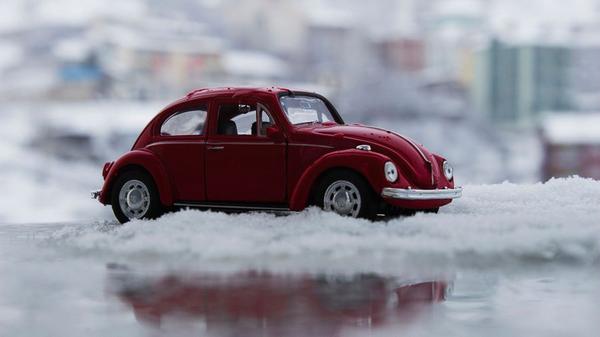
Check your car battery
Extremely cold weather can affect the performance of a battery, most commonly meaning it’s harder to start the engine. On top of that, cars take up more battery in winter as they require more power to start a cold engine and use car heating and window defrosters.
If your battery is more than five years old, consider getting it replaced as that’s the average life expectancy of a battery, according to the AA. You can use a home battery tester or visit a local garage specialist to check its health. Also, check the battery terminals are clean and tight. If there is any corrosion, you can try to clean it off, although if there is any obvious damage to the outside of the battery, leave it to a professional to check it. Some signs of battery terminal damage include difficulty in starting the car, stalling, battery corrosion and loss of electric power. If you do want to clean it yourself, make sure you disconnect the battery first, starting with the negative (usually black), or you could get a shock when you touch the positive. Reconnect the negative last too. You can then clean the terminals with a mix of warm water and baking soda (a strong mix) which will fizz, so don't panic. Use an old toothbrush or wire brush to clean and dry the connections afterwards with some paper towels. Apply some petroleum jelly to the exposed metal bits to help prevent future corrosion.
If your battery is more than five years old, consider getting it replaced as that’s the average life expectancy of a battery, according to the AA. You can use a home battery tester or visit a local garage specialist to check its health. Also, check the battery terminals are clean and tight. If there is any corrosion, you can try to clean it off, although if there is any obvious damage to the outside of the battery, leave it to a professional to check it. Some signs of battery terminal damage include difficulty in starting the car, stalling, battery corrosion and loss of electric power. If you do want to clean it yourself, make sure you disconnect the battery first, starting with the negative (usually black), or you could get a shock when you touch the positive. Reconnect the negative last too. You can then clean the terminals with a mix of warm water and baking soda (a strong mix) which will fizz, so don't panic. Use an old toothbrush or wire brush to clean and dry the connections afterwards with some paper towels. Apply some petroleum jelly to the exposed metal bits to help prevent future corrosion.
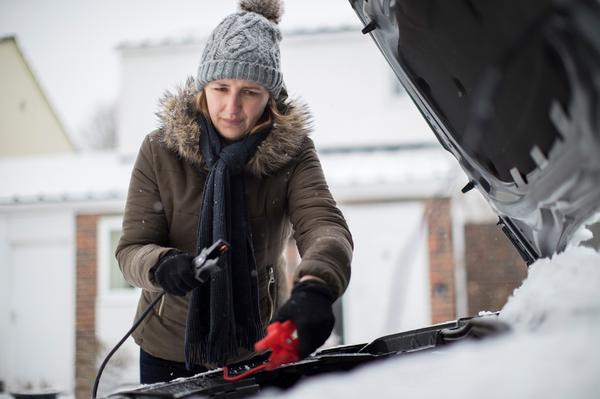
Clean your windows
It’s of utmost importance that you can properly see out of your windscreen and windows when driving. Also, legally you must always be able to see when driving, with all snow and ice cleared from your windows (Highway Code – Rule 229).
In winter, a combination of dirt and low sun can make it difficult to have clear visibility. To make sure you’ve got the clearest vision, clean your windscreen inside and out. Any leftover dirt or snow could obscure your view and result in a fine, so be thorough and remember to clear any snow from the roof (this way it won’t fall onto the windscreen). We also recommend you pack a pair of sunglasses to combat the added glare of snow and wintery skies. Also, check for any cracks in the glass, and use a windshield sealant before the cracks become worse in winter. It can be a good idea to get your windows inspected, especially if they’re old. • Use de-icer. Apply de-icer to break down the ice. If the ice is thick, use your window scraper to score the ice, as this can improve the de-icer’s effectiveness. Tip: applying de-icer the night before can prevent ice building up. • Don’t use boiling water to clear your windscreen. The sudden change in temperature could cause the glass to crack. Tepid or warm water is less likely to cause cracks but could freeze and result in thicker ice. • Demist before you set off. Don’t start driving until your windscreen is fully demisted. If you’re steamed up, try using air-con to clear the screen – it’s faster and results in less condensation. Do not stick your head out of the window and set off. • Don’t use old wipers if it’s frosty. If it’s particularly cold or frosty, then leaving your windscreen wipers on auto while parked should be a no-go. If they freeze to the screen you could damage the blades, the wiper’s motor, and even risk small scratches to your windscreen. For those reasons, we also recommend you replace worn or damaged blades to keep the risk of damage down.
In winter, a combination of dirt and low sun can make it difficult to have clear visibility. To make sure you’ve got the clearest vision, clean your windscreen inside and out. Any leftover dirt or snow could obscure your view and result in a fine, so be thorough and remember to clear any snow from the roof (this way it won’t fall onto the windscreen). We also recommend you pack a pair of sunglasses to combat the added glare of snow and wintery skies. Also, check for any cracks in the glass, and use a windshield sealant before the cracks become worse in winter. It can be a good idea to get your windows inspected, especially if they’re old. • Use de-icer. Apply de-icer to break down the ice. If the ice is thick, use your window scraper to score the ice, as this can improve the de-icer’s effectiveness. Tip: applying de-icer the night before can prevent ice building up. • Don’t use boiling water to clear your windscreen. The sudden change in temperature could cause the glass to crack. Tepid or warm water is less likely to cause cracks but could freeze and result in thicker ice. • Demist before you set off. Don’t start driving until your windscreen is fully demisted. If you’re steamed up, try using air-con to clear the screen – it’s faster and results in less condensation. Do not stick your head out of the window and set off. • Don’t use old wipers if it’s frosty. If it’s particularly cold or frosty, then leaving your windscreen wipers on auto while parked should be a no-go. If they freeze to the screen you could damage the blades, the wiper’s motor, and even risk small scratches to your windscreen. For those reasons, we also recommend you replace worn or damaged blades to keep the risk of damage down.

Clean your lights
As well as being able to see where you’re going, it’s also important that people can see you, especially in the dark and long winter nights!
Make sure all your lights – headlights, indicators, brake lights, fog lights included – are all clean. Problematic car lights are a major reason for failed MOTs. So, make sure that all your lights work properly. You can refer to your car’s handbook to know how to change car lights manually or get professional help. You should also ensure that the lights are dust-free – this helps in maintaining the lights’ effectiveness.
Make sure all your lights – headlights, indicators, brake lights, fog lights included – are all clean. Problematic car lights are a major reason for failed MOTs. So, make sure that all your lights work properly. You can refer to your car’s handbook to know how to change car lights manually or get professional help. You should also ensure that the lights are dust-free – this helps in maintaining the lights’ effectiveness.
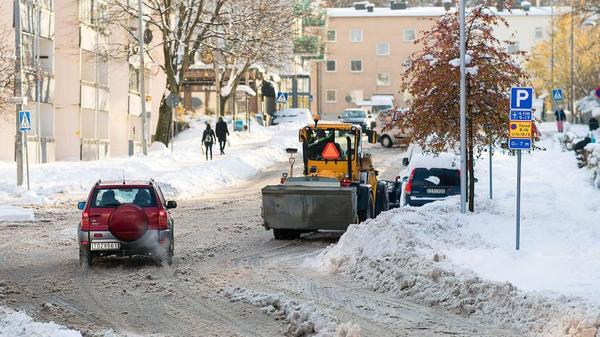
Check your tyres
Check that your tyres are in good condition. If you find any obvious faults like cracks or splits, then you should get it checked immediately.
The legal minimum tread depth limit is 1.6 mm, but in the colder months, it’s better to have a minimum of 3 mm of tread on your tyres for better control and grip. You can check this by using a tread depth gauge or getting a rough idea by looking at the tread wear indicators on your tyre. To see each tyre’s inner shoulder, you should turn the tyres to a full lock. In winter, tyre pressure reduces as compared to summer which consumes more fuel when driving. Thus, it’s important to check and maintain the correct tyre pressure. You can find the recommended PSI (pounds per square inch) figure in your car’s manual or online. If the tyres need topping up then you can visit any nearby petrol station with an air pump at most petrol stations, or you can buy a kit to keep at home. To improve tyre grip on snow and ice, you could add snow chains to your tyres – but you should only do this if there’s enough snow to prevent damage. You should also remove them as soon as you reach roads which are clear as otherwise, the chains can damage your car as well as the roads. You could also consider using snow socks instead of snow chains. However, if you’re travelling in a large car, travelling long distances or if the roads are icy, then snow socks wouldn’t be a viable option.
The legal minimum tread depth limit is 1.6 mm, but in the colder months, it’s better to have a minimum of 3 mm of tread on your tyres for better control and grip. You can check this by using a tread depth gauge or getting a rough idea by looking at the tread wear indicators on your tyre. To see each tyre’s inner shoulder, you should turn the tyres to a full lock. In winter, tyre pressure reduces as compared to summer which consumes more fuel when driving. Thus, it’s important to check and maintain the correct tyre pressure. You can find the recommended PSI (pounds per square inch) figure in your car’s manual or online. If the tyres need topping up then you can visit any nearby petrol station with an air pump at most petrol stations, or you can buy a kit to keep at home. To improve tyre grip on snow and ice, you could add snow chains to your tyres – but you should only do this if there’s enough snow to prevent damage. You should also remove them as soon as you reach roads which are clear as otherwise, the chains can damage your car as well as the roads. You could also consider using snow socks instead of snow chains. However, if you’re travelling in a large car, travelling long distances or if the roads are icy, then snow socks wouldn’t be a viable option.
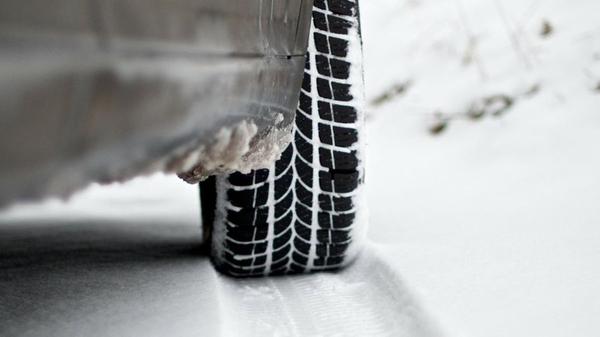
Consider fitting winter tyres
Letting air out of your tyres won’t create more grip and it’s unsafe. You may want to consider winter tyres or all-season tyres, which provide better grip and shorter stopping distances in cold and wet driving conditions.
Just remember that winter tyres need to be changed back to summer tyres when the weather warms up, because winter tyres don’t work as well and wear faster in temperatures above four degrees. Learn more about winter tyres.
Just remember that winter tyres need to be changed back to summer tyres when the weather warms up, because winter tyres don’t work as well and wear faster in temperatures above four degrees. Learn more about winter tyres.
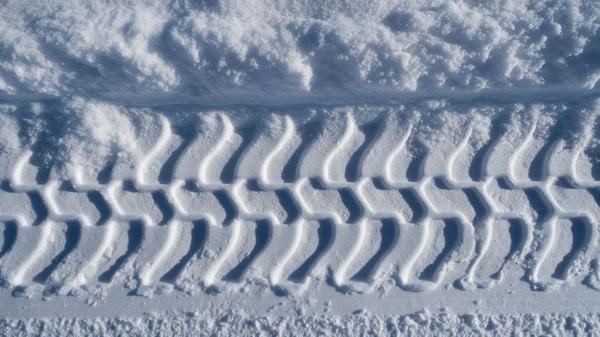
Check your wiper blades
Don’t use old wipers if it’s frosty - if it’s particularly cold or frosty, then leaving your windscreen wipers on auto while parked should be a no-go. If they freeze to the screen you could damage the blades, the wiper’s motor, and even risk small scratches to your windscreen.
For those reasons, we also recommend you replace worn or damaged blades to keep the risk of damage down. Check if there are any cracks or splits in the blades and buy new ones if they’re not working as well as they used to. Winter will do its best to throw all sorts of extra grime at your windscreen.
For those reasons, we also recommend you replace worn or damaged blades to keep the risk of damage down. Check if there are any cracks or splits in the blades and buy new ones if they’re not working as well as they used to. Winter will do its best to throw all sorts of extra grime at your windscreen.
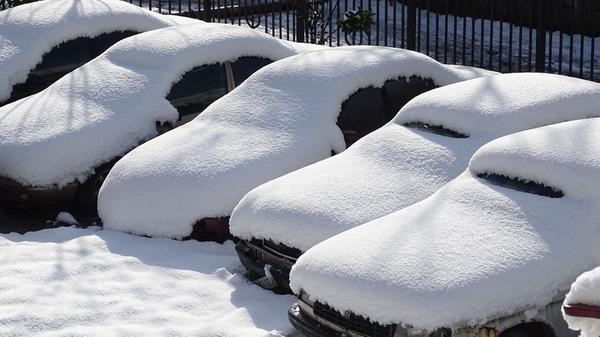
Clear leaves from under your bonnet
Leaves can be a menace in winter – they cover potholes and make the roads more slippery.
These leaves can also damage your car - they could block the drains that take away rainwater, which could lead to water leaking into your car. In some cases, they could also decompose (if not removed for a long time) and ruin the paintwork. So, while you’re checking your fluid levels, clear all the leaves from the edge of your bonnet.
These leaves can also damage your car - they could block the drains that take away rainwater, which could lead to water leaking into your car. In some cases, they could also decompose (if not removed for a long time) and ruin the paintwork. So, while you’re checking your fluid levels, clear all the leaves from the edge of your bonnet.
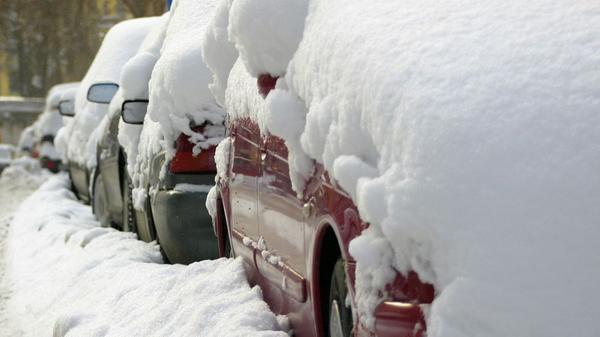
Carry your phone charger with you
One of the dangers of driving in snow is the risk of car breakdowns.
In such a situation, the last thing you’d want is to run out of phone battery in the middle of nowhere, so carry your phone charger in the car just in case. Also, you can consider buying a small portable charger to keep in the glovebox, so that you have a back-up if you don’t have any other means of charging. You should also write and keep your breakdown provider’s number on a piece of paper in the glovebox, as well as having it saved on your phone. Learn more about the dangers of winter driving.
In such a situation, the last thing you’d want is to run out of phone battery in the middle of nowhere, so carry your phone charger in the car just in case. Also, you can consider buying a small portable charger to keep in the glovebox, so that you have a back-up if you don’t have any other means of charging. You should also write and keep your breakdown provider’s number on a piece of paper in the glovebox, as well as having it saved on your phone. Learn more about the dangers of winter driving.
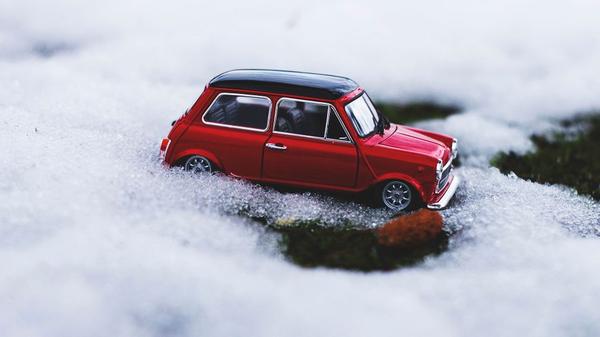
Consider buying a car cover
It’s not a necessity for winter, but a car cover can help prevent fluids in your car from freezing, save you precious time in the morning so that you don’t have to de-ice your windows (five more minutes in bed, yay), and help in protecting your car from salt that might be spread near your home.
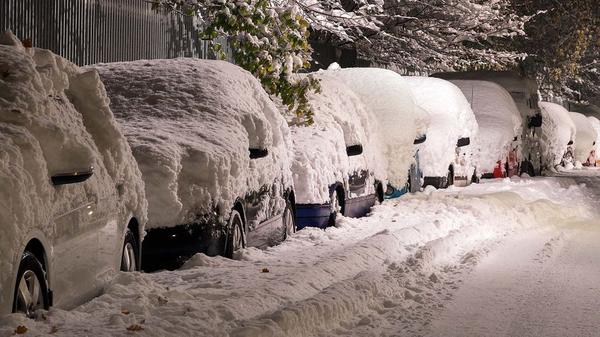
Make a winter car survival kit
We advise you to pack an emergency kit. It may seem a bit extreme but making up a winter car survival kit could be really helpful and keep you safe if your car breaks down.
You can buy a small camping shovel and look at getting a first aid kit, torch, warning triangle, jump leads, spare carpet to use if your tyres are stuck/spinning, and tow-rope as well. If you’ve got a spare coat, throw that in the boot, along with a hi-vis jacket, and some boots/wellies and other warm clothes. Also carry some food such as high-energy cereal bars, which will also help if you forget to have breakfast.
You can buy a small camping shovel and look at getting a first aid kit, torch, warning triangle, jump leads, spare carpet to use if your tyres are stuck/spinning, and tow-rope as well. If you’ve got a spare coat, throw that in the boot, along with a hi-vis jacket, and some boots/wellies and other warm clothes. Also carry some food such as high-energy cereal bars, which will also help if you forget to have breakfast.
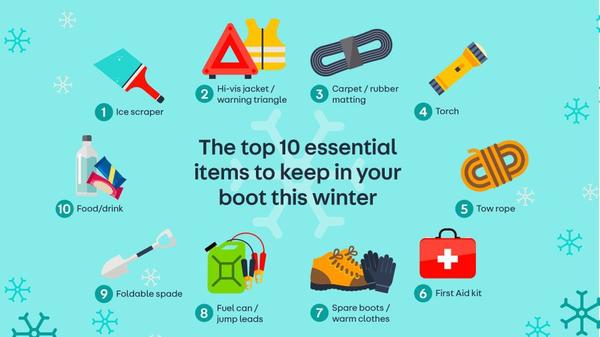
Learn more about winter driving or check out the top cars for driving in snow.